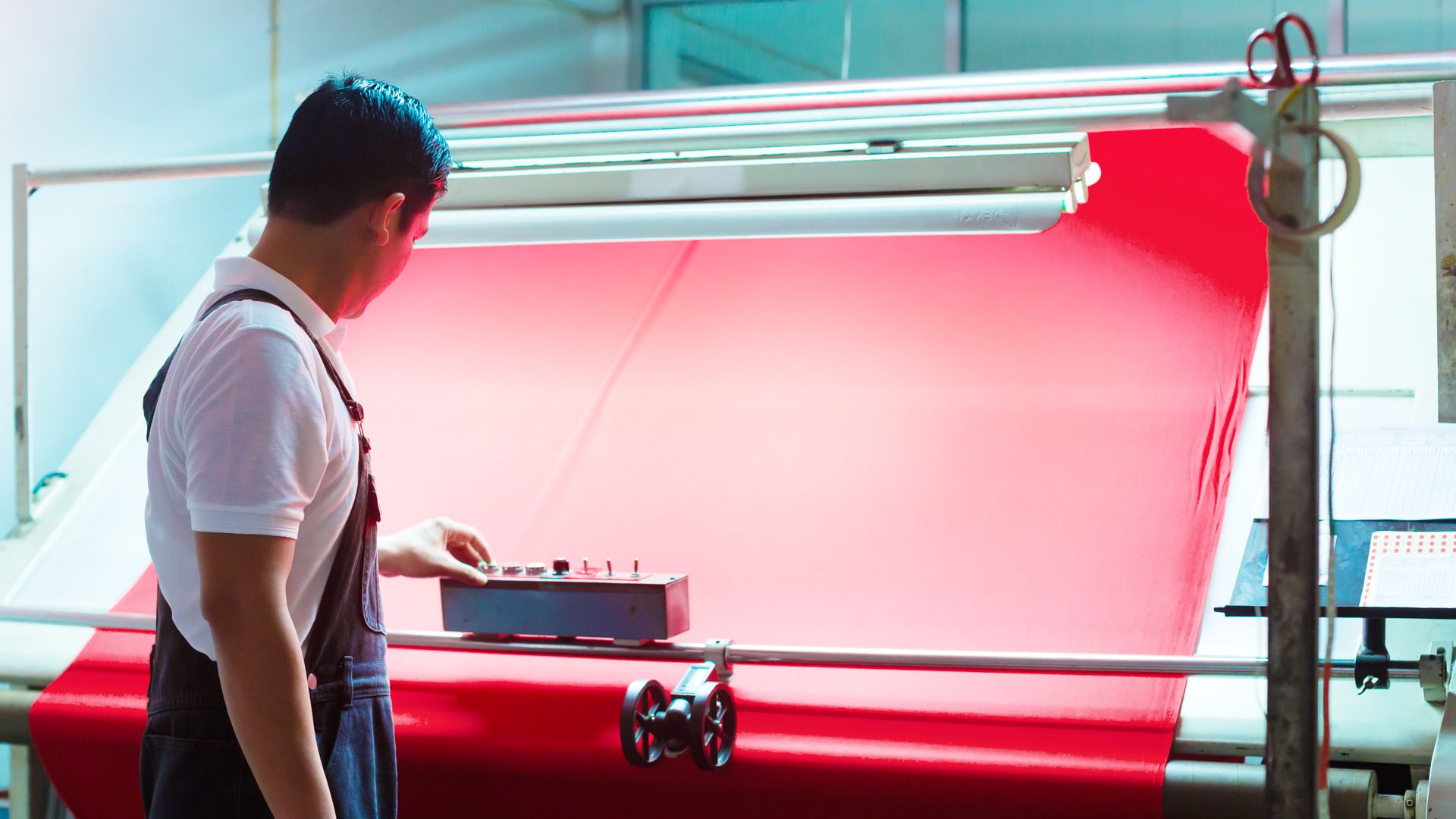
Textile & Fabric Testing Solutions
We help brands meet their quality standards by providing physical and chemical testing for fabrics and textiles. Get help with quality control from the most trusted experts in the industry.

We help brands meet their quality standards by providing physical and chemical testing for fabrics and textiles. Get help with quality control from the most trusted experts in the industry.
Our full-range quality assurance solutions will help you meet the quality and regulation standards of your destination market. We offer laboratory tests for all modern textiles, including:
Textile and canvas rolls
Home textiles, carpeting, curtains, and upholstery
Textile checks on finished products (garments, apparel, accessories, toys)
Our testing services help textile mills, manufacturers, importers, and retailers ensure that their products meet their own quality standards and the requirements of their destination markets.
By contacting QIMA you agree to our privacy policy and terms and conditions.
Changing regulations and varying enforcement for different markets presents a compliance challenge for mills, manufacturers, importers, and retailers. Our team of experts is here to help you mitigate risk with the appropriate inspections, tests, and certifications.
Common challenges we help our clients overcome:
Understanding regulatory compliance
Selecting the right tests for your market
Conducting independent third party testing
Delivering lab test reports
Attaining recognized product certifications
Creating corrective action plans
We are a trusted testing partner in the textile industries.
Mechanical Testing
Our experts conduct thorough checks of your merchandise, following detailed checklists compiled based on your requirements, international regulations, safety standards, and our extensive know-how.
We offer the following physical and mechanical tests to assess the quality of your textiles:
Performance: abrasion or piling (Martindale, ICI)
Dimensional stability: torque, shrinkage, elongation, stretch and recovery
Weather testing: waterproof, windproof, thermal, spray test
Thermal and water vapor resistance / permeability
Burn test (for 100% cotton textiles)
Stiffness and bending
Seam strength (for sewn articles)
Tearing strength, penetration resistance
Thickness, compression, and recovery (for floor coverings)
Tensile properties
Optical evaluation (appearance after the desired care treatment)
Laboratory Testing
Our laboratory tests help you navigate the safety requirements and meet the standards of your destination market. We have labs around the world and our experts stay up-to-date with the latest regulatory requirements and test methods.
Restricted substances screening for raw materials
Fiber identification
Eco-textile testing
Banned azo dyes and colorants
Colorfastness check (CF to light, ozone, burnt gas fumes, phenolic yellowing perspiration, water, bleach, abrasion)
Antibacterial and antimicrobial testing
Formaldehyde testing
Pentachlorophenol (PCP) testing
Polycyclic aromatic hydrocarbons (PAH) testing
Dimensional stability and appearance evaluation after laundering cycles
Heavy metals in surface coatings
General Product Safety Directive (2001/95/EC)
REACH (Regulation on Registration, Evaluation, Authorization, and Restriction of Chemicals)
Substances of Very High Concern (SVHC) Screening
Regulation (EU) No 1007/2011 on textile fibre names and related labelling and marking of the fibre composition of textile products
AATCC 8 Colorfastness to Crocking (wet & dry)
AATCC 15 Colorfastness to Perspiration
AATCC 16.3 Option 3 Colorfastness to Light
AATCC 106 Colorfastness to Sea Water
AATCC 107 Colorfastness to Water
AATCC 116 Colorfastness to Crocking (rotary)
AATCC 135 Dimensional Stability of Fabric for Home Laundering
AATCC 150 Dimensional Changes of Garmet to Home Laundering
AATCC 162 Colorfastness to Chlorinated (Pool) Water
AATCC 112 Formaldehyde Release from Fabric (quantitative) – sealed jar method
AATCC 94-2017 Formaldehyde (spot test)
16 CFR 1610 Flammability of Clothing Textiles
16 CFR 1611 Flammability of Vinyl Plastic Film
16 CFR 1615 & 1616, Flammability of Children’s Sleepwear
16 CFR 1500.51-53 Attachment Strength
16 CFR 423 Care Labeling
16 CFR 303 Fiber Content Label
ASTM D 1230 Standard Test Method for Flammability of Apparel Textiles
ASTM D 4151 Standard Test Method for Flammability of Blankets
Canadian Textile Flammability Regulations (SOR/2016-194) – Bedding Textile
Canadian Textile Flammability Regulations (SOR/2016-194) – Non-bedding Textile
Canadian Toys Regulations (SOR/2011-17) Item 34, Flammability Requirement of Hair or Mane
Canadian Toys Regulations (SOR/2011-17) Item 32, Flammability Requirement of Outer Covering
Canadian Toys Regulations (SOR/2011-17) Item 33, Flammability Requirement of Yarn
Canadian Toys Regulations (SOR/2011-17) Item 21, Celluloid or Cellulose Nitrate
CPSIA Lead Content in Surface Coatings
CPSIA Lead Content in Substrates
CPSIA Phthalates Content
Cross Cut Adhesion – ASTM D3359
Polymer Identification – FTIR
China – GB 18401 testing
China – GB 31701 testing
CPAI-84, Flammability of Camping Tents
Don’t see what you need? Send us a note with your request. This is a limited list of tests we can conduct.
Show your customers your products have superior quality with a recognized certification. We provide certification for all types of fabrics and textiles. We can help you certify your products have been manufactured with adherence to good chemical management practices and sustainable sourcing principles. You may choose one of the following certification schemes:
Learn About Textile Testing
With global experience in quality testing, we keep up with the current state of textile standards and regulations so you don’t have to. Improve your fabric products, avoid costly recalls, build consumer confidence, and gain a competitive advantage by applying the right tests at the right time.
Textile Testing Types:
Textile Testing Standards:
By contacting QIMA you agree to our privacy policy and terms and conditions.